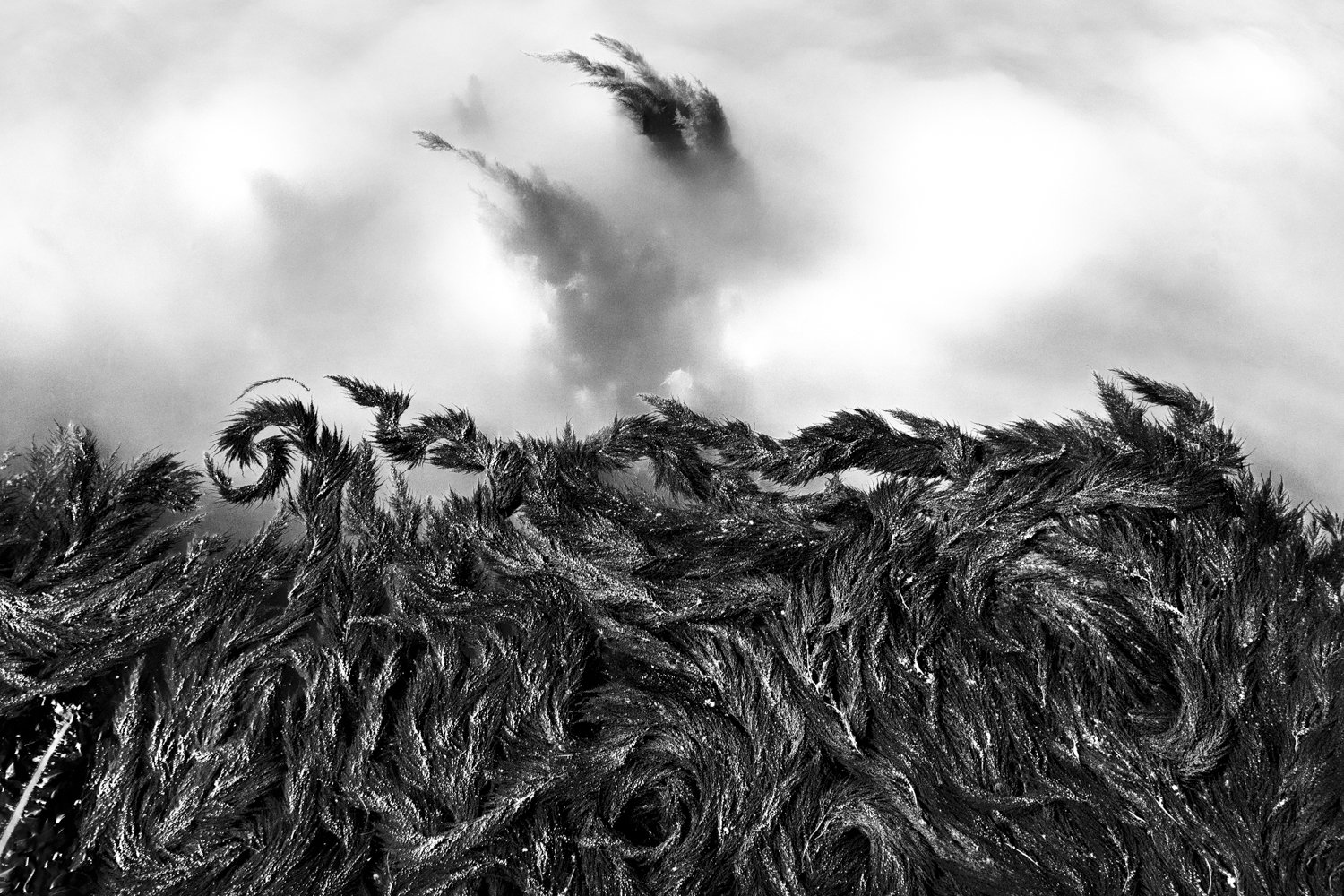On the Edge of Venice: A Plunge into the Void
A plunge into the void, through violent storms and unknown lands, into the mist that renders everything motionless and mysterious—suddenly, my photography shifts in meaning. Beyond the boundary between civilization and the sea, in the waters that for centuries have clashed against the Istrian stone of the lagoon’s docks, my curiosity gives way to wonder. Figures blur, and Venice dissolves into sinuous lines that carry my gaze through swirling echoes of ancient and unexpected visions. Then, everything takes on new meaning; the descent into the unknown ceases, and the intricate forms begin to weave stories upon the canvas of my images.
Contemporary narratives intertwine with my exploration—like that of Sargassum muticum, an oriental alga that arrived in the Venetian lagoon in the 1990s, becoming an obsession for Venetians as it tangled in boat propellers, gondoliers' oars, and every dock. Its presence recalls the inspirations of Hokusai’s Japanese waves, Dürer’s meticulous engravings, and the dark, immersive worlds of Gustave Doré. Globalization manifests in the disruption of delicate ecosystems, the struggle between natural balance and human intervention. Yet, the invader transforms into a symbol, given a name—"the hair of Venice"—and ceases to be feared, becoming part of the landscape. It shifts from geography to history, shaping new imagery that I have captured and translated into this series of images, taken during my own underwater journey that began with a plunge into the void.
As if the boundary between the human and the natural has shifted to the water’s surface—between the visible and the unknown—my descent into the depths becomes a reinterpretation of the magical world of an impossible city.
Thus, shipwreck becomes a choice, akin to that necessary sin that condemned Ulysses to endless wanderings in pursuit of knowledge—the same force that has driven art since the dawn of human expression. But this time, the journey is possible, and the ending remains open.
La nave si è incagliata in qualcosa di terribile. Nella nebbia non si distinguono le spirali nere che ci trattengono dalle creste delle onde. Vediamo la riva bruna sempre lì, immobile, bianca tra il cielo e il mare, confini marcati dallʼassenza di colore nella melma dei secoli che in lei si rispecchiano. Dallʼoriente al nostro fiume nuove figure si compongono come tentacoli spugnosi e ci sembra quasi di distinguere una figura. Ma unʼonda più forte ci assale, sʼinfrange sulla chiglia, la nave sʼinclina, vediamo le braccia del tempo accoglierci e subito allontanarsi. Di nuovo lʼinverso, agli antipodi del mondo, da unʼisola allʼaltra, ci sembra di cadere. Arde la prua impaziente, sʼimpenna, sobbalza, sembra che voglia staccarsi ma ricade dʼun tonfo. Soli con il nocchiere guardiamo alla luce ma gli occhi ricadono su scie di brace che come fiammelle contendono la vita alle onde, incerti se quel viaggio sia il frutto del peccato o il rivelarsi della vita. Maledetti dallʼassenza di vento siamo noi le vele. Oscilliamo da un lato allʼaltro. Frustati da un mare straniero in una terra desolata. Indietreggiamo, neanche i remi riescono a scalfire quellʼacqua infestata; il nocchiere ride. Risucchiati dalle onde tiranne scivoliamo nei gorghi della nebbia notturna. Tra un lampo e lʼindefinito, tra gli abissi e le stelle, nel cerchio di vita che violento ci affonda, ci scopriamo incapaci di restare fermi. Nulla è più stabile, la vista si scioglie tra un riflesso e un contorno. Il bianco è sfuocato, si allontana, e il mondo fluttua sotto i confini che lʼuomo ha dato al mare.
Testo di Sabato Angieri














